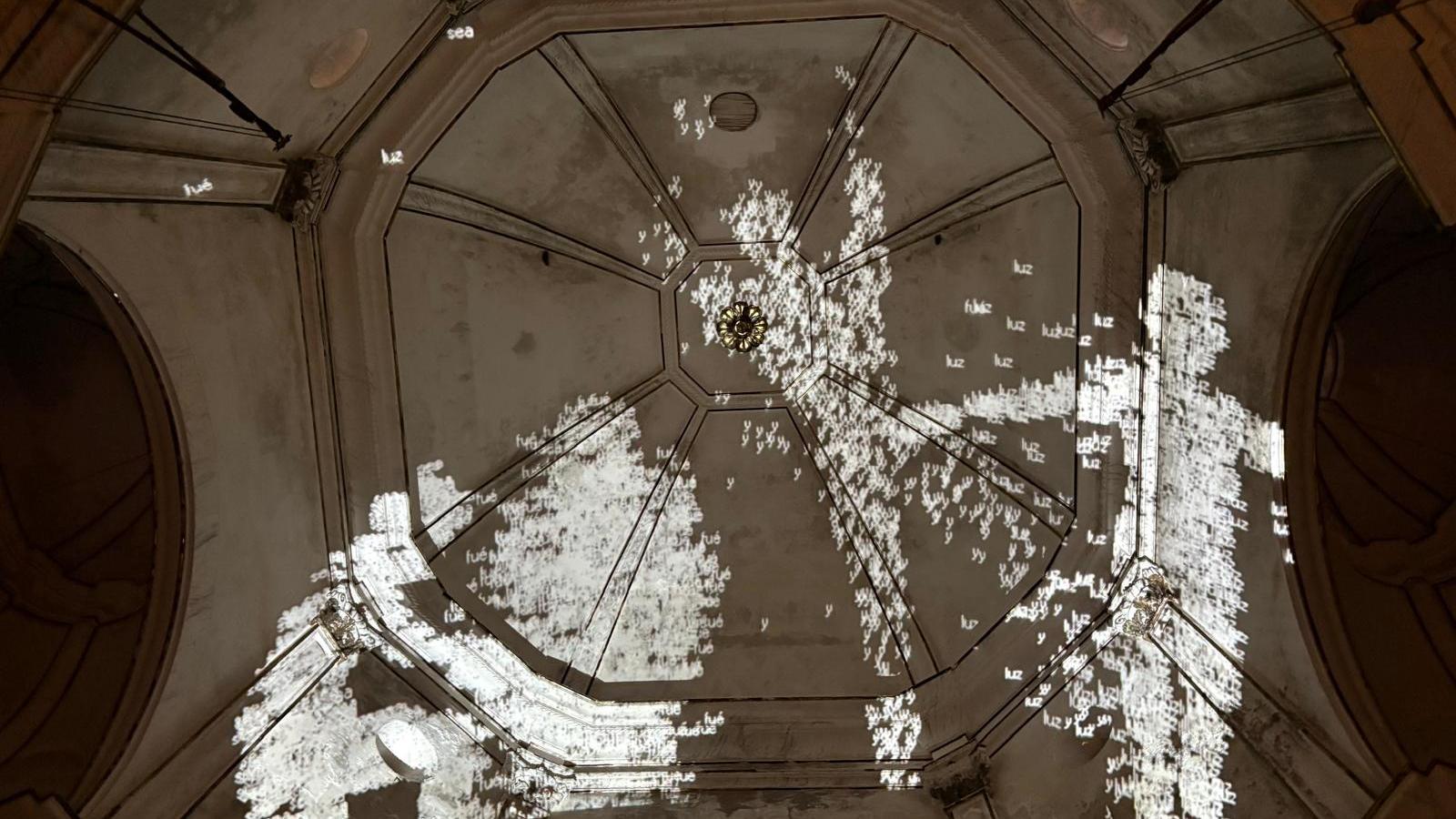Felanitx Art Night features an installation by Charles Sandison
This is an audiovisual piece that can be seen from this Thursday until August 24.

PalmThe church of Sant Agustí hosts the work Figures & Letters (2006), a video installation by renowned Scottish artist Charles Sandison, is projected onto the octagonal central roof with irregular faces, clad in a white tone of aged lime, which presides over and crowns the chapel of Sant Nicolau. The exhibition, curated by Neus Cortès and Sebastià Mascaró, can be seen as part of Felanitx Art Night from this Thursday until next Sunday, August 24.
Taking advantage of the interplay of light and dark, the work also extends to the first floor, from where a network of equivalent vaults and arches begins, opening onto the different chapels. A set of plural architectural elements that form the ceiling of a peculiar 18th-century liturgical space, with a centralized cross-shaped floor plan, which hosts this presentation as an astronomical observatory, a constellation, or a 'celestial dome'. Charles Sandison is known for his digital projections generated with a software in real time, which he creates himself, and which are projected onto a variety of exterior or interior architectural spaces in museums or art galleries, among others. In this way, the artist combines language, form, architecture, and movement.
In this case, the work is composed of three files of approximately 798 different images each, which are randomly synchronized, forming constantly moving sequences. A swarm of letters, texts, and words are projected, forming rains and human figures that interact with each other, transforming the entire architectural space of the chapel's dome into a second skin. These silhouettes are configured and simultaneously disintegrated, creating multiple moving scenes, sometimes more figurative and sometimes more abstract. They simulate patterns of human behavior that establish a dialogue with the viewer and invite them to immerse themselves and complete the meaning of the images and words based on their subjectivity.
Within the convent that houses this work, references must be made to Saint Augustine and his order, who considered mathematics (the language and basis of technology, providing tools and platforms for applying mathematical concepts) as a means to approach God and understand the truth. The saint believed that mathematics revealed the order and harmony of the universe, a reflection of the divine order. For the Augustinian order, the dome is understood as a symbol of the celestial vault, becoming a space that connects the earth with the divine, where the light of truth illuminates the human mind, representing transcendent knowledge. The installation is accompanied by a sound piece composed by Pedro Tous, made in a system of random sources modulated by voltage control, which invites one to immerse oneself in the work.
Charles Sandison (Haltwhistle, UK, 1969) studied Art at the Glasgow School of Art in the United Kingdom. Since 1995, he has lived and worked in Finland. He participated in the Venice Biennale in 2001 with the work Living Rooms; later, at the Venice Architecture Biennale in 2012, collaborating on Norman Foster's project Gateway. He received the 8th ARCOMadrid BEEP Electronic Art Award in 2013. He has created installations in public and private art institutions around the world. Notable exhibitions include those at the Centre d'Art Contemporain Georges Pompidou, France (2003) and the Musée de Orsay Art Contemporain, Paris, France (2008). In Spain, he has exhibited at the Galería Max Estrella (2012) and the Museo Nacional Centro de Arte Reina Sofía, Madrid (2009).
